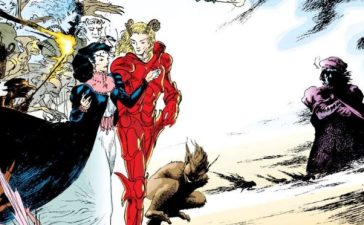
“The Merman”: Were Aquaman and the Sub-Mariner Inspired by a Pulp Science Fiction Story?
Publishers DC Comics and Marvel Comics have their respective aquatic superheroes, Aquaman and the Sub-Mariner. Both characters appeared during the Golden Age of comics and both characters have Atlantean origins. The similar origins and aquatic powers of the two characters make for a fun debate as to which character is the superior aquatic superhero, but are the characters’ similarities due to a shared source of inspiration? Might the creators of these characters have been inspired by a science fiction story entitled “The Merman”?

In their book The Science of Superheroes, authors Lois Gresh and Robert Weinberg suggest that “The Merman” may have inspired the creation of both the Sub-Mariner and Aquaman. Written by L. Sprague de Camp and published in the December 1938 issue of Astounding Science-Fiction, “The Merman” features Vernon Brock, an assistant aquarist at the New York City Aquarium who has developed a chemical vapor that will theoretically allow lung tissue to function like gills and take oxygen from water. Brock intends to test the vapor on an alligator but accidentally inhales the vapor; as a result, his lungs can no longer function out of water and he is forced to stay in one of the aquarium’s shark tanks until the effects of the vapor wear off.
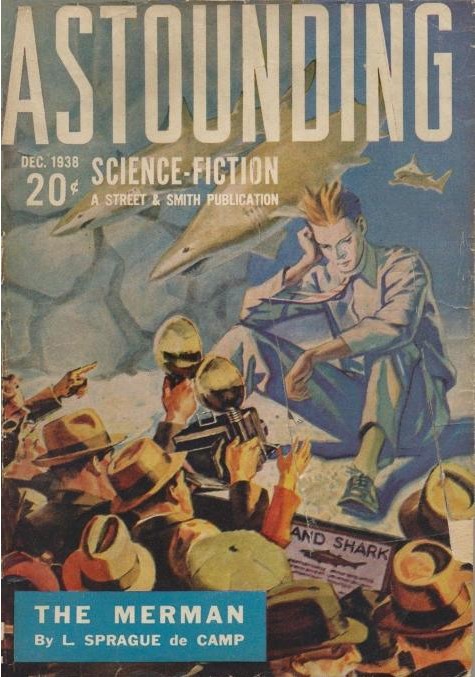
The story’s premise allows de Camp to explore the scientific plausibility and limitations of a human being breathing underwater. For example, Brock finds it hard work to breath water; he has to concentrate to keep the glottal muscles in his throat from reflexively snapping shut and stopping his breathing, and his mammalian metabolism rapidly uses all the air his gill-like lungs provide, making Brock tire quickly. Brock struggles to stay warm in the cold shark tank, to eat food (the sharks are quick to grab any food put in the tank by Brock’s co-workers), and to get enough oxygen from the water.
These underwater breathing limitations are scientifically accurate; as Gresh and Weinberg note: “…a container of water contains only five percent the amount of oxygen gas available in the same container filled with air. To get the necessary amount of oxygen needed to survive underwater, we’d have to breathe in twenty times more water than air. That would take an immense amount of effort.” Also, because water is heavier than air, breathing water would be a great strain on human lungs.
Although de Camp inserts much humor into the story and provides a happy ending to the adventure, Brock’s breathing challenges grip the reader’s attention with insightful speculation on the dangers and possibilities of a human being breathing water. While de Camp’s story presented a human protagonist who could breathe underwater, Gresh and Weinberg note that it was two comic book superheroes that popularized the concept.
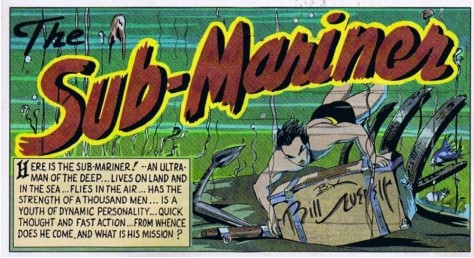
Created by writer/artist Bill Everett, Prince Namor the Sub-Mariner debuted in Marvel Comics #1 (Oct. 1939); the character was supposed to appear in a promotional comic book giveaway, Motion Pictures Funnies Weekly, which failed to materialize, and the Sub-Mariner feature was picked up by comics publisher Martin Goodman for his Marvel Comics anthology. After the 1938 debut of Superman, superhero characters had become popular with comics readers, and Goodman hoped to cash in on that popularity with the Sub-Mariner and other superheroes.
The Sub-Mariner was the son of a U.S. Navy officer and a princess of the water-breathing Atlanteans who lived in a kingdom beneath the ocean. Namor possessed super-strength and could fly, powers that were common among many Golden Age superhero characters inspired by Superman. However, Namor had the unique ability to breathe both above and below the sea. The Sub-Mariner could battle injustice both on land and under the water.
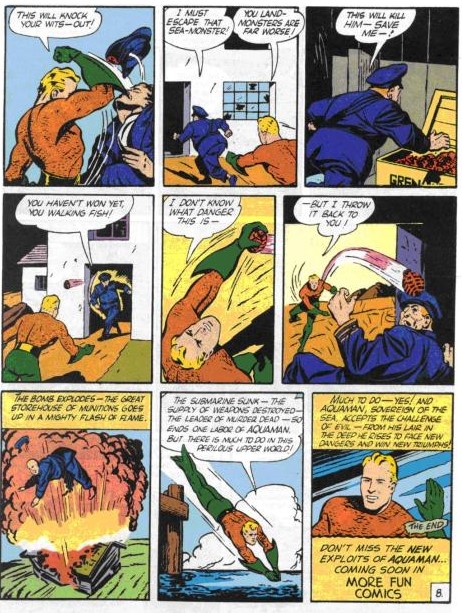
Created by writer Mort Weisinger and artist Paul Norris, Aquaman debuted in More Fun Comics #73 (Nov. 1941), and had the ability to breath both in and out of the water; unlike the Sub-Mariner, he could not fly and was not super-strong, but Aquaman could command sea life to do his bidding. Although modern comics fans may be familiar with the Silver Age origin of Aquaman, which establishes that Aquaman’s parents are a light-house keeper and a water-breathing Atlantean princess (a very similar origin to the Sub-Mariner’s), the character’s original Golden Age origin is very different.
Weisinger’s initial origin story for Aquaman revealed that Aquaman’s father was an undersea explorer who discovered the submerged ruins of Atlantis and used the advanced knowledge of the lost civilization to develop a process allowing his son to draw oxygen from the water. Both Weisinger’s story and de Camp’s “The Merman” feature the use of a scientific method to allow a human being to breath underwater. Weisinger, as an avid science fiction fan and former editor of the science fiction fanzine The Time Traveller, may have read de Camp’s story.
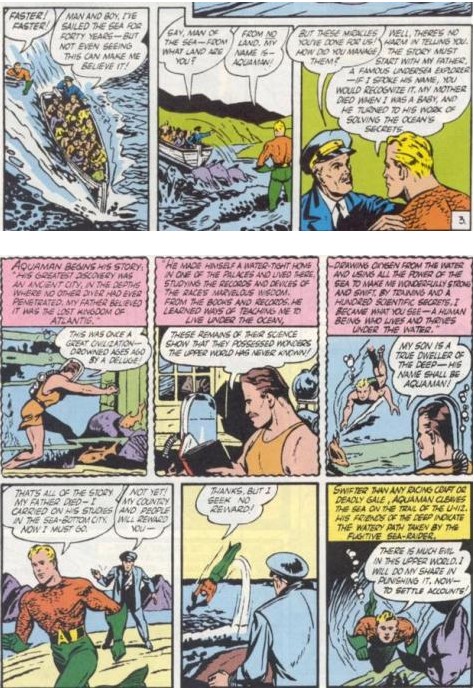
Both Aquaman and the Sub-Mariner have the ability to breath underwater due to their respective connections to Atlantis. Atlantis has fascinated the world since the Greek philosopher Plato first wrote about the sunken city in his dialogues around 360 B.C., and although many authors have crafted fantasy tales about the survivors of Atlantis, Gresh and Weinberg note that these fantasy Atlantean survivors were not water-breathers; they might live beneath a glass dome under the sea or wander the Earth, but they did not breathe water. It is interesting that Everett’s Sub-Mariner origin was the first to present the idea of a water-breathing Atlantean civilization, followed by Weisinger’s Aquaman.
But did “The Merman” inspire either Everett or Weisinger? There is no proof that it did; Weisinger, with his science fiction interests, may have read the story, but there is no evidence to support this supposition. Gresh and Weinberg speculate that H.G. Well’s The Island of Doctor Moreau (with its ideas of animal/human hybrids) and Olaf Stapledon’s Last and First Men (which explored the concept of different species of mankind existing in different environments) were influences on both creators, and that “Another possible influence on the two creators was L. Sprague de Camp’s pulp story ‘The Merman’…” However, the authors do not spend any time exploring this hypothesis, and in the next sentence declare “It’s equally probable, however, that both heroes were merely Superman in the water, with Atlantis serving as a convenient explanation for their powers.”
Although we cannot confirm whether “The Merman” inspired Everett and Weisinger to create their respective aquatic superheroes, the story remains an early and interesting science fictional exploration of the possibility of humans breathing water, and the character Vernon Brock is a noteworthy water-breathing predecessor of both the Sub-Mariner and Aquaman.






